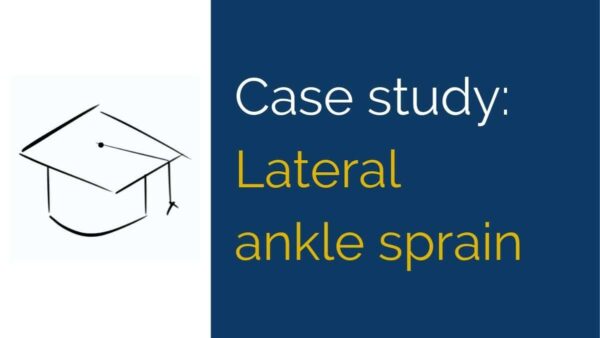Background
Lateral ankle sprains can cause ligament damage as well as injury to bone, tendon, cartilage and capsular structures. Use this case and the prompt questions to refine your approach to ascertaining the diagnosis and treatment goals.
Minimum Level
New Graduate Physiotherapist
Case
Semi-professional basketballer, 24 year old male, with a history of lateral ankle sprain injuries.
Consider the impact of a history of ankle sprains on proprioception, causative biomechanics and rehab considerations
Mentor’s reasoning:
The patient presented 3 days after an inversion/lateral ankle sprain of his Right ankle.
He was unable to play on and needed crutches to ambulate non-weight bearing on his injured side.
Would you use the Ottawa rules to determine the need for an X-ray?
What are the limitations of assessment only 3 days post-injury?
Mentor’s reasoning:
He described immediate swelling after the incident, which has maintained or worsened slightly since the injury. He also describes constant pain, easing to date.
How might swelling impact the diagnostic process and our rehab goals?
Mentor’s reasoning:
On observation, the patient had bruising up his lateral calf and around his lateral ankle. He had significant amounts of swelling primarily accumulating around the talocrural joint.
Consider the pattern of ankle swelling and current impact on biomechanics
Mentor’s reasoning:
There was pain on palpation across the anterolateral joint line, anterior joint line, posterolateral joint line and posteromedial joint line.
There was additional tenderness on the medial malleolus (but not the posterior aspect of the malleolus)
What could account for each area of tenderness?
Mentor’s reasoning:
Follow up questioning
What further questions would you ask to help refine your “lateral ankle sprain” diagnosis and goal setting?
Mentor’s reasoning:
Have you established any clinical goals for rehab at this point?
Mentor’s reasoning:
Diagnosis and key findings
What are your three most likely pathologies and why?
Mentor’s reasoning:
What are your key findings (related to monitoring rehab progress and secondary pathologies)?
Mentor’s reasoning:
Rehab planning
Which treatment options would address your clinical goals?
Mentor’s reasoning:
Which treatment options may help manage secondary issues such as midfoot joint pain and general loss of strength?
Mentor’s reasoning:
Would you advise any adjunct treatments such as use of medication?
Mentor’s reasoning:
Like to continue the conversation? Head over to our Facebook page.

